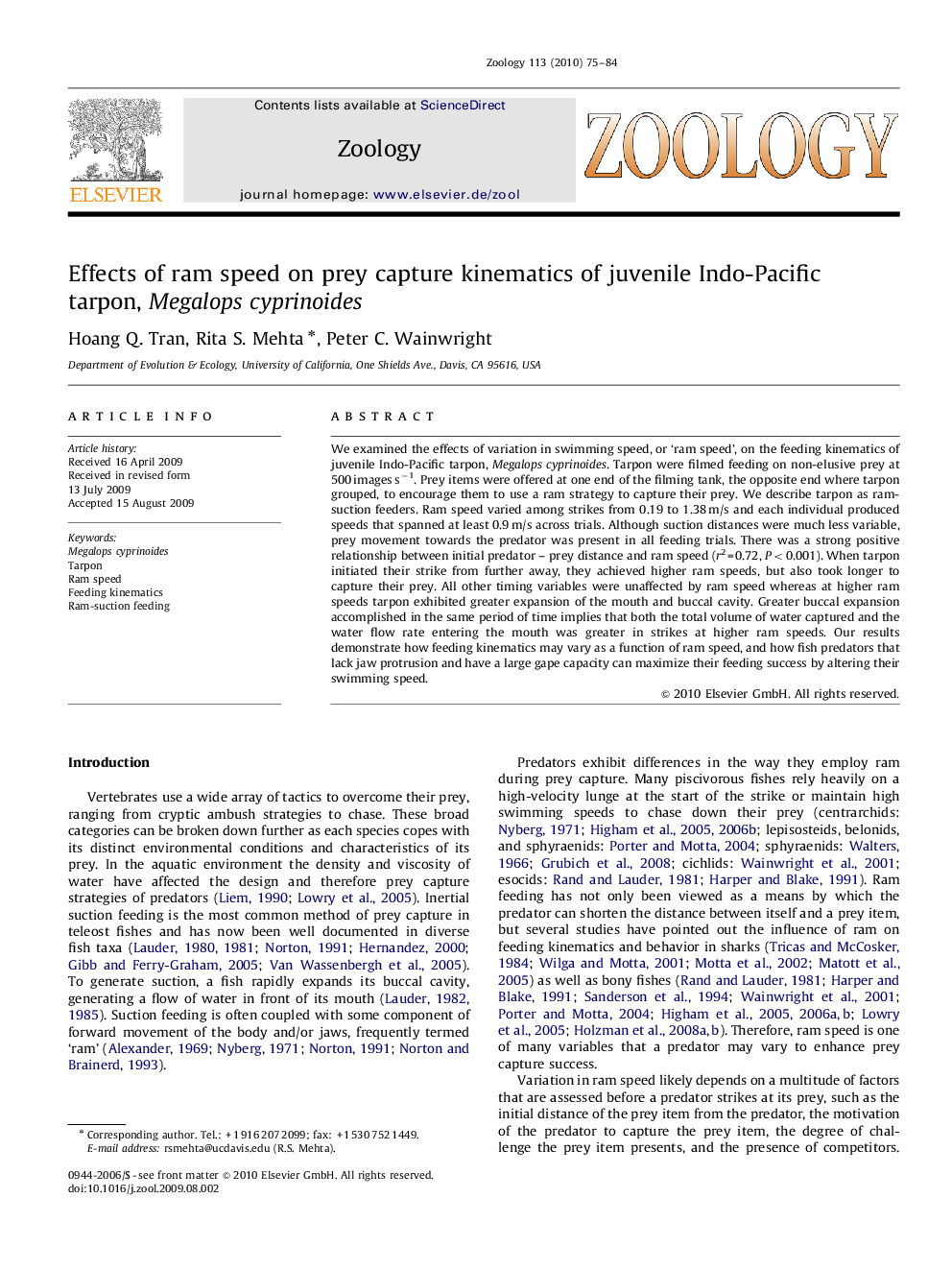| Article ID | Journal | Published Year | Pages | File Type |
|---|---|---|---|---|
| 2791198 | Zoology | 2010 | 10 Pages |
We examined the effects of variation in swimming speed, or ‘ram speed’, on the feeding kinematics of juvenile Indo-Pacific tarpon, Megalops cyprinoides. Tarpon were filmed feeding on non-elusive prey at 500 images s−1. Prey items were offered at one end of the filming tank, the opposite end where tarpon grouped, to encourage them to use a ram strategy to capture their prey. We describe tarpon as ram-suction feeders. Ram speed varied among strikes from 0.19 to 1.38 m/s and each individual produced speeds that spanned at least 0.9 m/s across trials. Although suction distances were much less variable, prey movement towards the predator was present in all feeding trials. There was a strong positive relationship between initial predator – prey distance and ram speed (r2=0.72, P<0.001). When tarpon initiated their strike from further away, they achieved higher ram speeds, but also took longer to capture their prey. All other timing variables were unaffected by ram speed whereas at higher ram speeds tarpon exhibited greater expansion of the mouth and buccal cavity. Greater buccal expansion accomplished in the same period of time implies that both the total volume of water captured and the water flow rate entering the mouth was greater in strikes at higher ram speeds. Our results demonstrate how feeding kinematics may vary as a function of ram speed, and how fish predators that lack jaw protrusion and have a large gape capacity can maximize their feeding success by altering their swimming speed.
